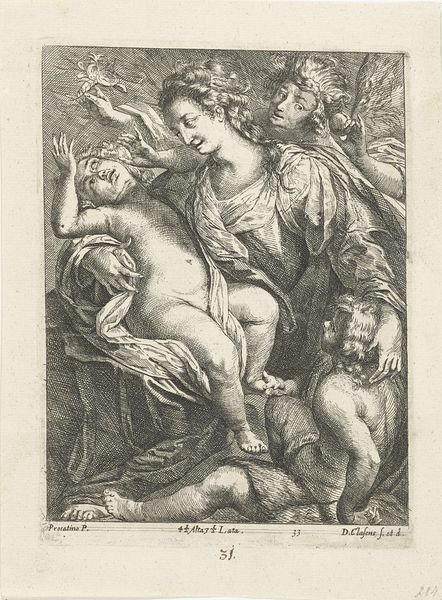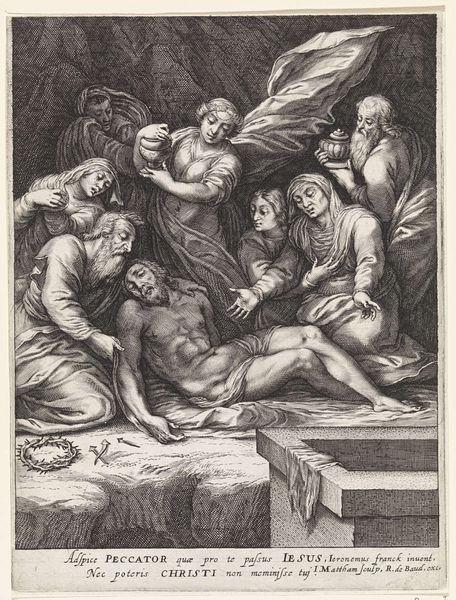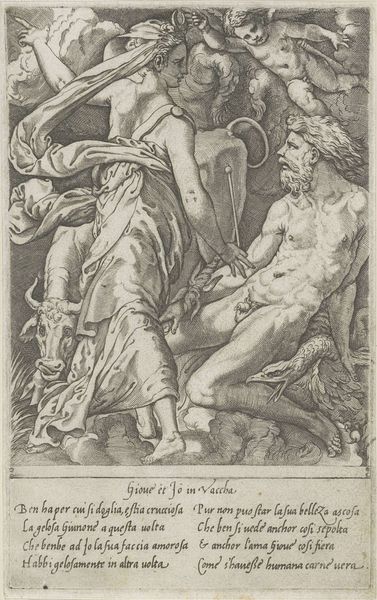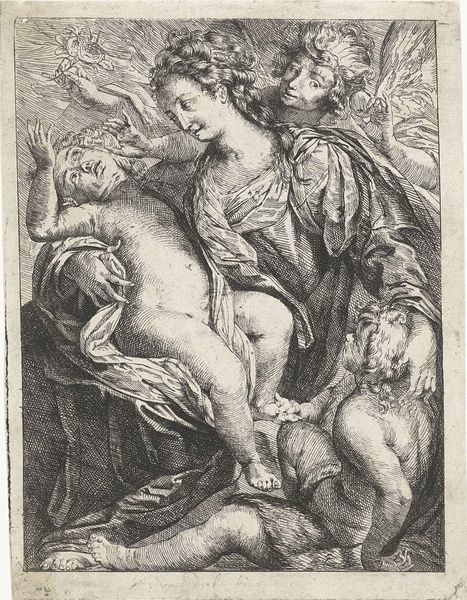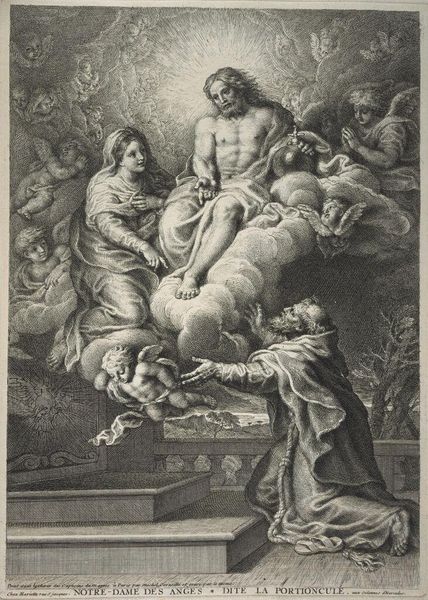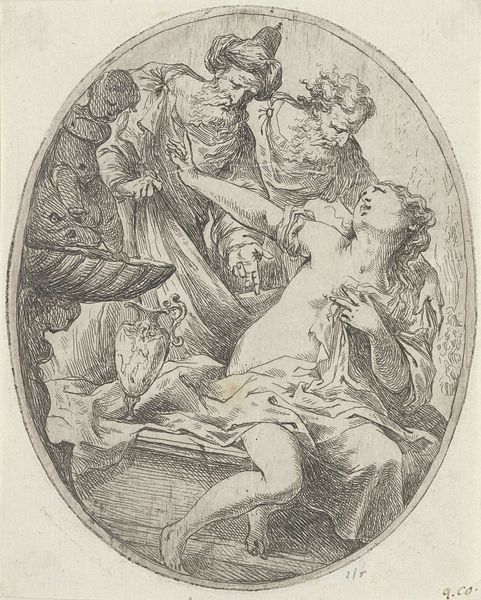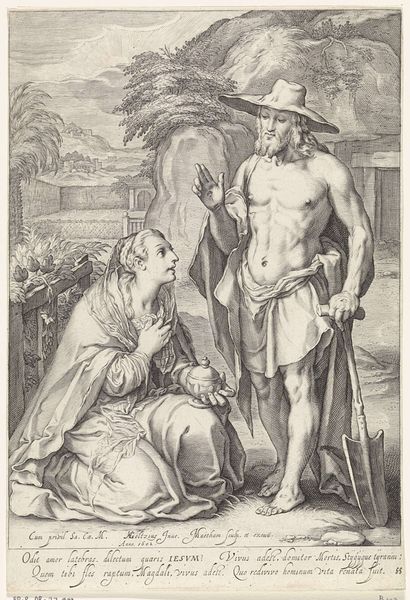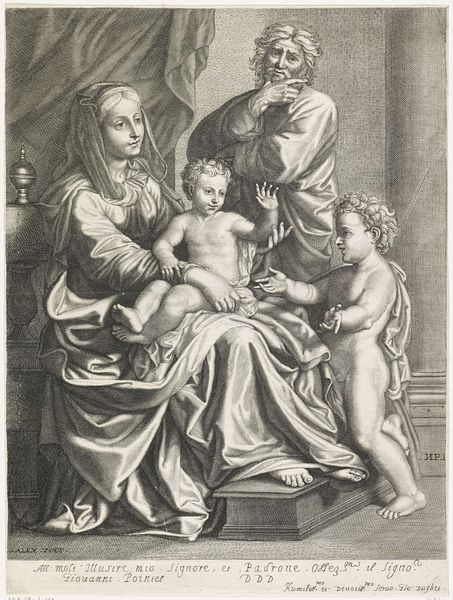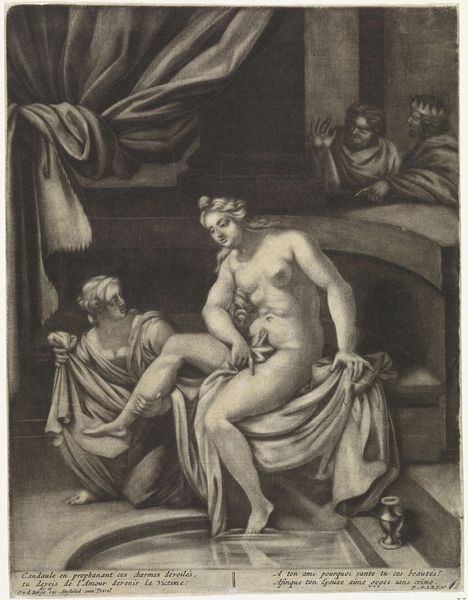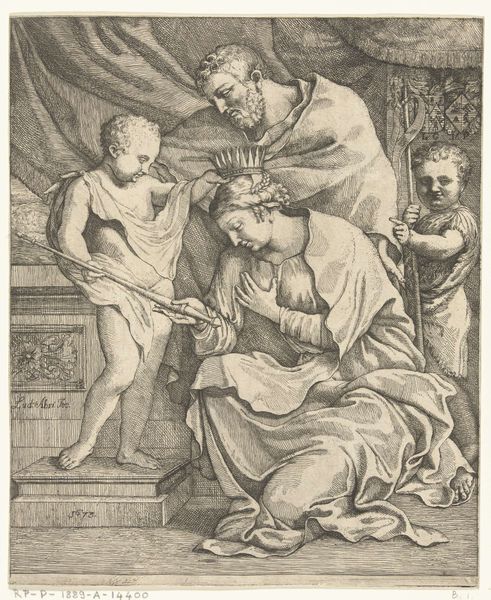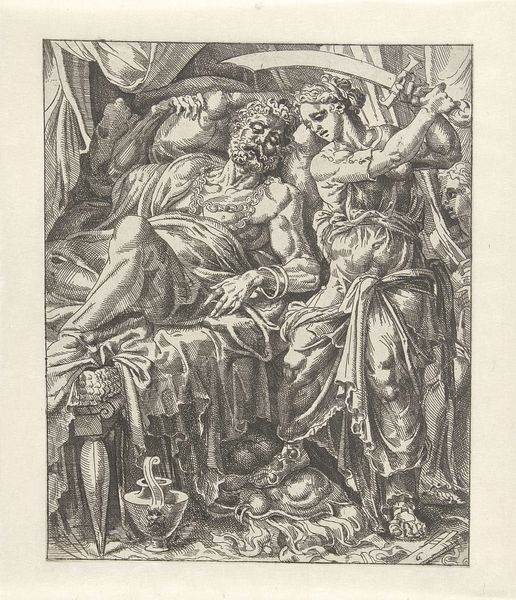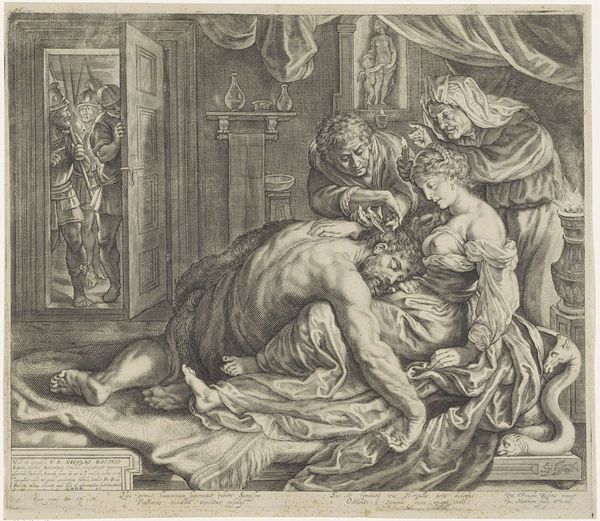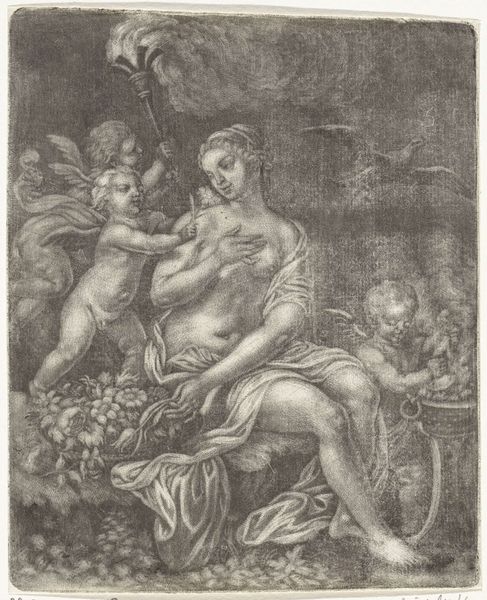
print, engraving
#
narrative-art
#
baroque
# print
#
figuration
#
history-painting
#
nude
#
engraving
Dimensions: height 255 mm, width 175 mm
Copyright: Rijks Museum: Open Domain
Jacob Gole created this engraving, "Suzanna en de ouderlingen," using a technique that was both widely accessible and highly skilled. Engraving involves meticulously cutting lines into a metal plate, in this case copper, with a tool called a burin. The plate is then inked, and the surface wiped clean, leaving ink only in the incised lines. When paper is pressed against the plate, the image is transferred. The fineness of the lines, the density of the cross-hatching, and the overall tonal range all speak to Gole's mastery. The beauty of engraving lies in its reproducibility. Unlike a unique painting, prints could be disseminated widely, bringing art to a broader audience, effectively democratizing art consumption. However, it also depended on a system of labor, with workshops of skilled artisans producing these images for a growing market. The resulting prints, therefore, reflect both artistic skill and the social and economic structures of the time. Understanding the material process of engraving helps us appreciate not only the artistry, but also the work’s place within the broader context of labor, production, and consumption in the 17th and 18th centuries.
Comments
No comments
Be the first to comment and join the conversation on the ultimate creative platform.
